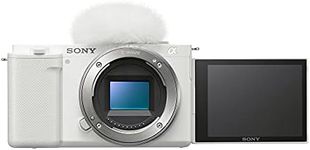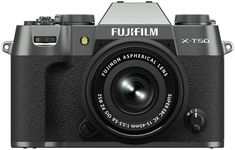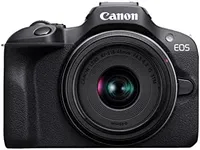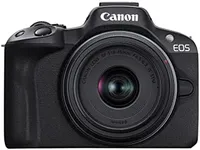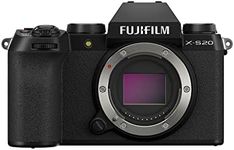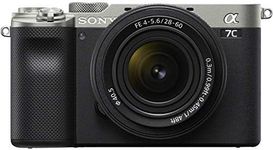Buying Guide for the Best Compact Mirrorless Cameras
Choosing a compact mirrorless camera can be exciting, as these cameras offer a great balance between image quality and portability. When shopping for one, it's important to think about how you'll use the camera—whether for travel, family events, creative photography, or everyday snapshots. Understanding the key features will help you find a camera that matches your needs and makes photography enjoyable and easy.Sensor SizeThe sensor is the part of the camera that captures light and creates the image. Sensor size is important because it affects image quality, especially in low light, and influences how much background blur you can get. Common sensor sizes in compact mirrorless cameras include Micro Four Thirds, APS-C, and sometimes full-frame. Micro Four Thirds sensors are smaller and make the camera and lenses more compact, which is great for travel and everyday use. APS-C sensors are a bit larger and generally offer better image quality and more control over depth of field, making them good for enthusiasts who want more creative options. Full-frame sensors are the largest and provide the best image quality, but they make the camera bigger and heavier. Think about how much you value portability versus image quality to decide which sensor size fits your needs.
Autofocus SystemThe autofocus system determines how quickly and accurately the camera can focus on your subject. This is especially important for capturing moving subjects, like kids or pets, or for street photography. Some cameras have basic autofocus with fewer focus points, which works well for still subjects and general use. Others offer advanced autofocus with many focus points and features like face or eye detection, which are helpful for portraits and action shots. If you often photograph people, animals, or fast-moving scenes, look for a camera with a more advanced autofocus system. For casual or landscape photography, a simpler system may be enough.
Image StabilizationImage stabilization helps reduce blur caused by shaky hands, especially in low light or when using longer lenses. Some cameras have stabilization built into the camera body (in-body stabilization), while others rely on stabilized lenses. In-body stabilization is more versatile because it works with any lens you attach. If you plan to shoot handheld in various conditions or want to avoid carrying a tripod, look for a camera with good image stabilization. If you mostly shoot in bright light or use a tripod, this feature may be less critical.
Size and WeightOne of the main reasons to choose a compact mirrorless camera is portability. Size and weight can vary even among compact models. Smaller, lighter cameras are easier to carry all day and fit into small bags, making them ideal for travel and everyday use. Slightly larger models may offer better handling, more controls, or a bigger grip, which can be more comfortable for longer shooting sessions. Consider how and where you'll use the camera most often to decide what size and weight will be comfortable for you.
Viewfinder and ScreenSome compact mirrorless cameras have an electronic viewfinder (EVF), while others rely only on the rear screen for composing shots. An EVF is helpful in bright sunlight or for more precise framing, while a tilting or fully articulating screen is great for shooting at unusual angles or taking selfies. If you often shoot outdoors or want more flexibility in how you compose your shots, look for a camera with both a good EVF and a versatile screen. If you mostly shoot casually or indoors, a simple screen may be enough.
Lens CompatibilityMirrorless cameras use interchangeable lenses, and the range of available lenses can affect your photography options. Some systems have a wide variety of lenses, from wide-angle to telephoto, while others have a more limited selection. If you plan to experiment with different types of photography, like landscapes, portraits, or macro, check what lenses are available for the camera system you're considering. If you prefer to keep things simple, a camera with a good all-purpose kit lens may be all you need.
Connectivity FeaturesModern cameras often include features like Wi-Fi, Bluetooth, or NFC, which make it easy to transfer photos to your phone or control the camera remotely. These features are useful if you like to share photos quickly on social media or want to use your phone as a remote shutter. If instant sharing and convenience are important to you, look for a camera with strong connectivity options. If you prefer to transfer photos to your computer later, this may be less important.


